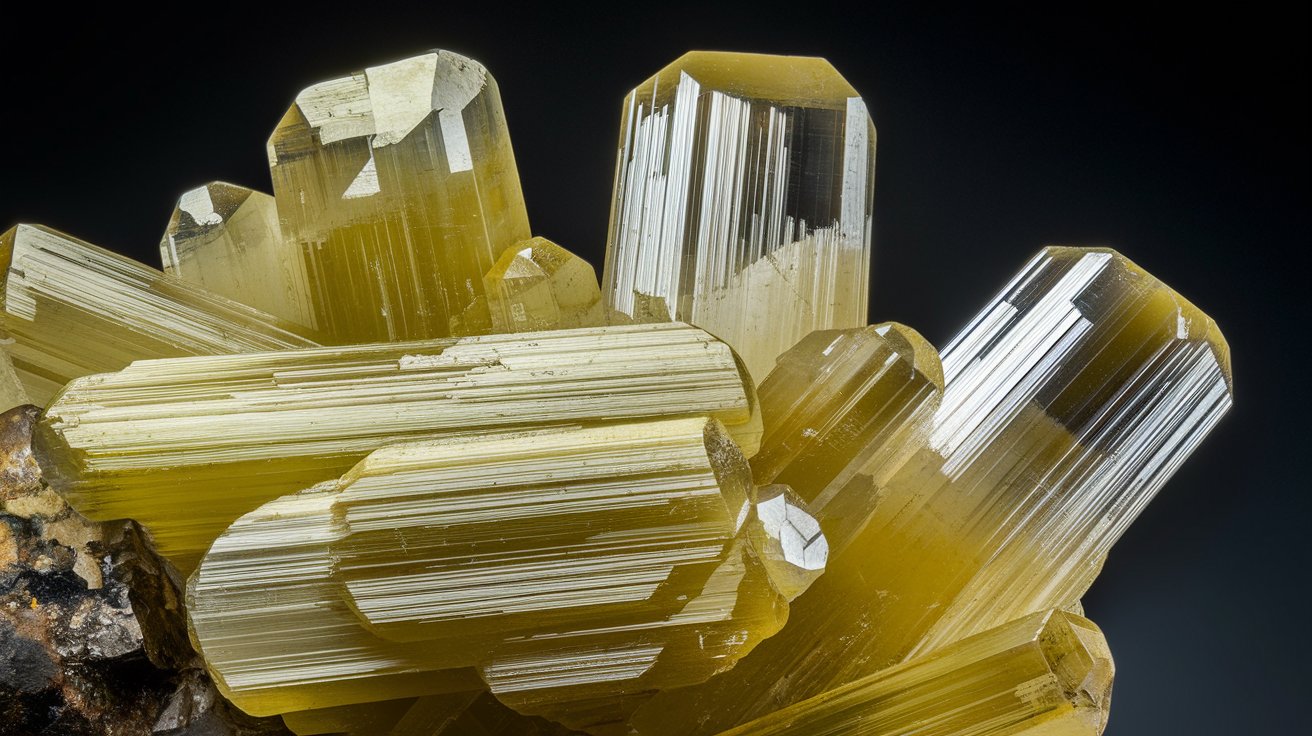
What is Brushite? Brushite is a fascinating mineral that often goes unnoticed. It is a calcium phosphate mineral with the chemical formula CaHPO4·2H2O. Brushite forms in sedimentary environments, often found in caves, guano deposits, and even kidney stones. Its delicate, colorless to pale yellow crystals can be quite striking under the right conditions. This mineral has a Mohs hardness of 2.5, making it relatively soft. Brushite is not just a geological curiosity; it has practical applications in medicine and dentistry. Understanding this mineral can offer insights into both natural processes and human health. Ready to learn more? Let's dive into 35 intriguing facts about Brushite!
Key Takeaways:
- Brushite is a unique mineral found in bird and bat excrement, caves, and marine environments. It has uses in dental cements, kidney stone research, and even as a potential material for bone grafts.
- Brushite's formation and properties make it a fascinating mineral with implications for human health. It can form intricate crystals, fluoresce under UV light, and has potential in dental and medical applications.
What is Brushite?
Brushite is a fascinating mineral with a unique composition and interesting properties. It’s a hydrated calcium phosphate mineral, often found in phosphate-rich environments. Let's dive into some intriguing facts about this mineral.
-
Brushite has the chemical formula CaHPO4·2H2O, indicating it contains calcium, hydrogen, phosphorus, and water molecules.
-
This mineral was first discovered in 1865 by American mineralogist George Jarvis Brush, after whom it is named.
-
Brushite typically forms in sedimentary environments, especially in guano deposits, which are accumulations of bird or bat excrement.
-
It often appears as colorless to pale yellow crystals, though it can also be white or gray.
-
The crystals of brushite are usually transparent to translucent, giving them a glassy or pearly luster.
Physical Properties of Brushite
Understanding the physical properties of brushite can help in identifying and studying this mineral. Here are some key characteristics.
-
Brushite has a Mohs hardness of 2.5, making it relatively soft and easy to scratch.
-
It has a specific gravity of 2.33, which is considered light for a mineral.
-
The crystal system of brushite is monoclinic, meaning it has three unequal axes with one inclined to the other two.
-
Brushite exhibits perfect cleavage in one direction, which means it can split easily along that plane.
-
The mineral has a vitreous to pearly luster, giving it a shiny appearance.
Formation and Occurrence
Brushite forms under specific conditions and can be found in various locations around the world. Here are some facts about its formation and occurrence.
-
Brushite commonly forms in caves where bat guano accumulates and reacts with limestone.
-
It can also form as a secondary mineral in phosphate-rich soils and sediments.
-
Notable locations where brushite has been found include the United States, Germany, and Morocco.
-
Brushite is often associated with other phosphate minerals like apatite and variscite.
-
It can also form as a result of the weathering of phosphate rocks.
Uses and Applications
Brushite has several uses, particularly in the medical and dental fields. Here are some interesting applications of this mineral.
-
Brushite is used in the production of certain types of dental cements.
-
It plays a role in the formation of kidney stones, specifically as a precursor to more stable forms of calcium phosphate stones.
-
Researchers study brushite to understand the processes involved in biomineralization, the formation of minerals by living organisms.
-
It is also used in the synthesis of other phosphate compounds in laboratories.
-
Brushite can serve as a model compound for studying the behavior of phosphate minerals in various environments.
Brushite in Nature
Brushite’s presence in nature is quite intriguing. Here are some facts about its natural occurrence and significance.
-
Brushite can be found in bird guano deposits on islands and coastal regions.
-
It often forms in caves where bat guano accumulates, reacting with the cave's limestone walls.
-
Brushite is a precursor to other phosphate minerals, which means it can transform into more stable forms over time.
-
The mineral can also form in marine environments where phosphate-rich waters interact with calcium-bearing sediments.
-
Brushite plays a role in the phosphorus cycle, an essential process for life on Earth.
Brushite and Human Health
Brushite has implications for human health, particularly in the context of kidney stones and dental health. Here are some facts related to this aspect.
-
Brushite kidney stones are less common but more difficult to treat than other types of calcium phosphate stones.
-
The formation of brushite stones can be influenced by diet, hydration, and genetic factors.
-
Brushite is used in some dental cements due to its biocompatibility and ability to bond with bone.
-
Researchers are exploring ways to prevent brushite stone formation through dietary modifications and medications.
-
Understanding brushite's role in kidney stone formation can help develop better treatments and preventive measures.
Fun and Lesser-Known Facts
Here are some fun and lesser-known facts about brushite that you might find interesting.
-
Brushite crystals can sometimes form beautiful, intricate shapes, making them a favorite among mineral collectors.
-
The mineral can fluoresce under ultraviolet light, emitting a pale blue glow.
-
Brushite is often found in fossilized bones and teeth, where it forms as a result of the mineralization process.
-
It can also form in bird nests, where droppings accumulate and react with the nesting material.
-
Brushite has been studied as a potential material for bone grafts due to its similarity to human bone mineral.
Brushite's Fascinating World
Brushite, a mineral with a unique crystal structure, offers more than meets the eye. Found in phosphate-rich environments, it plays a crucial role in both geology and medicine. Its ability to form kidney stones makes it a subject of medical research, while its presence in caves and guano deposits intrigues geologists.
Understanding brushite helps scientists develop better treatments for kidney stones and offers insights into phosphate cycling in nature. Its delicate, needle-like crystals are not just visually stunning but also scientifically significant.
Whether you're a geology enthusiast or someone interested in medical science, brushite has something to offer. Its multifaceted nature makes it a fascinating subject worth exploring. So next time you come across this mineral, remember there's a lot more to it than just its appearance. Brushite truly is a gem in the world of minerals.
Frequently Asked Questions
Was this page helpful?
Our commitment to delivering trustworthy and engaging content is at the heart of what we do. Each fact on our site is contributed by real users like you, bringing a wealth of diverse insights and information. To ensure the highest standards of accuracy and reliability, our dedicated editors meticulously review each submission. This process guarantees that the facts we share are not only fascinating but also credible. Trust in our commitment to quality and authenticity as you explore and learn with us.


